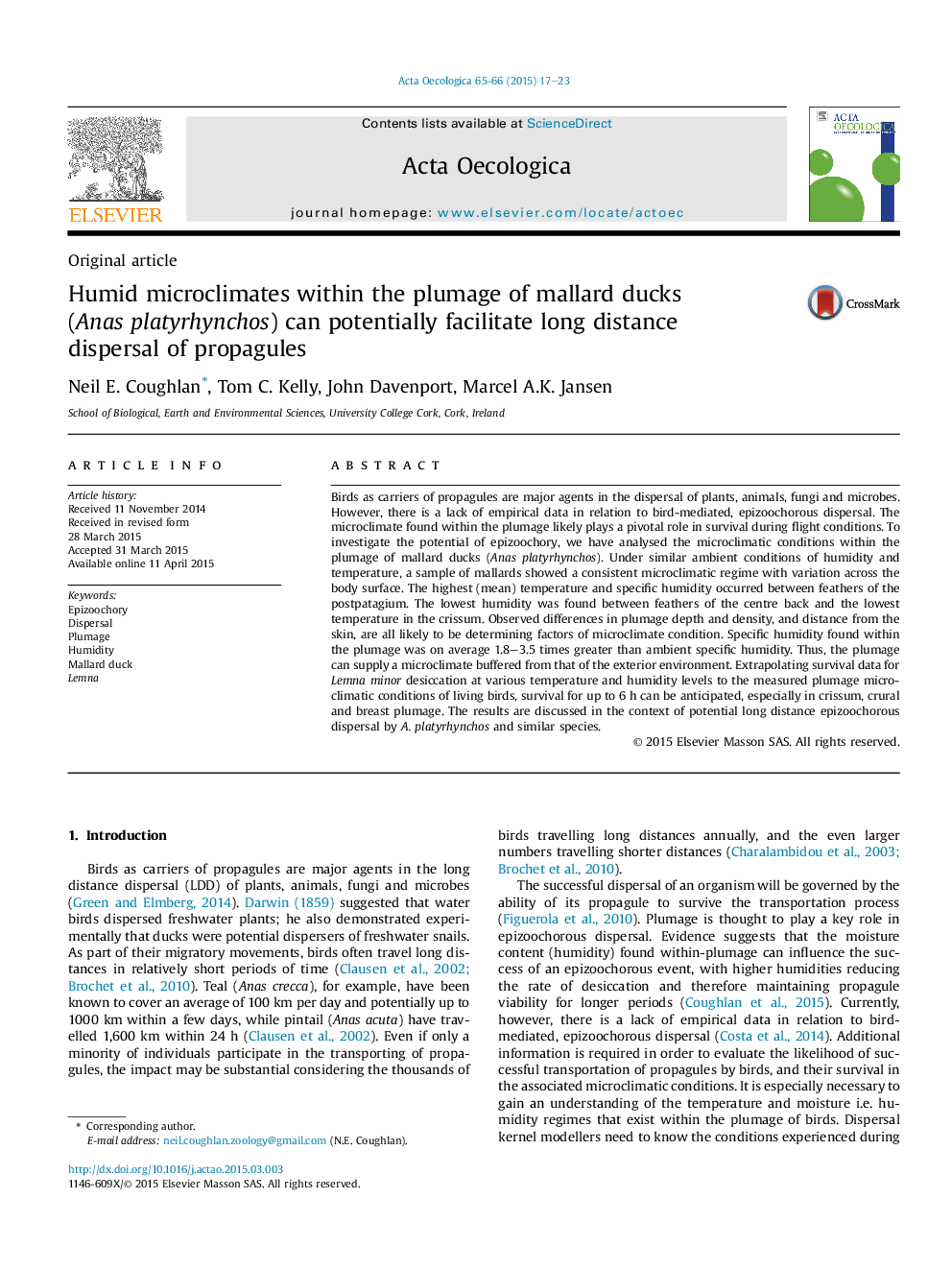| کد مقاله | کد نشریه | سال انتشار | مقاله انگلیسی | نسخه تمام متن |
|---|---|---|---|---|
| 4380679 | 1617706 | 2015 | 7 صفحه PDF | دانلود رایگان |

• The microclimatic conditions within the plumage of mallard ducks were analysed.
• The plumage creates a microclimate buffered from the exterior environment.
• Specific humidity within plumage was 1.8–3.5 times greater than ambient levels.
• Desiccation survival for Lemna minor was evaluated.
• L. minor survival for up to 6 h can be anticipated within mallard plumage.
Birds as carriers of propagules are major agents in the dispersal of plants, animals, fungi and microbes. However, there is a lack of empirical data in relation to bird-mediated, epizoochorous dispersal. The microclimate found within the plumage likely plays a pivotal role in survival during flight conditions. To investigate the potential of epizoochory, we have analysed the microclimatic conditions within the plumage of mallard ducks (Anas platyrhynchos). Under similar ambient conditions of humidity and temperature, a sample of mallards showed a consistent microclimatic regime with variation across the body surface. The highest (mean) temperature and specific humidity occurred between feathers of the postpatagium. The lowest humidity was found between feathers of the centre back and the lowest temperature in the crissum. Observed differences in plumage depth and density, and distance from the skin, are all likely to be determining factors of microclimate condition. Specific humidity found within the plumage was on average 1.8–3.5 times greater than ambient specific humidity. Thus, the plumage can supply a microclimate buffered from that of the exterior environment. Extrapolating survival data for Lemna minor desiccation at various temperature and humidity levels to the measured plumage microclimatic conditions of living birds, survival for up to 6 h can be anticipated, especially in crissum, crural and breast plumage. The results are discussed in the context of potential long distance epizoochorous dispersal by A. platyrhynchos and similar species.
Journal: Acta Oecologica - Volumes 65–66, May–June 2015, Pages 17–23